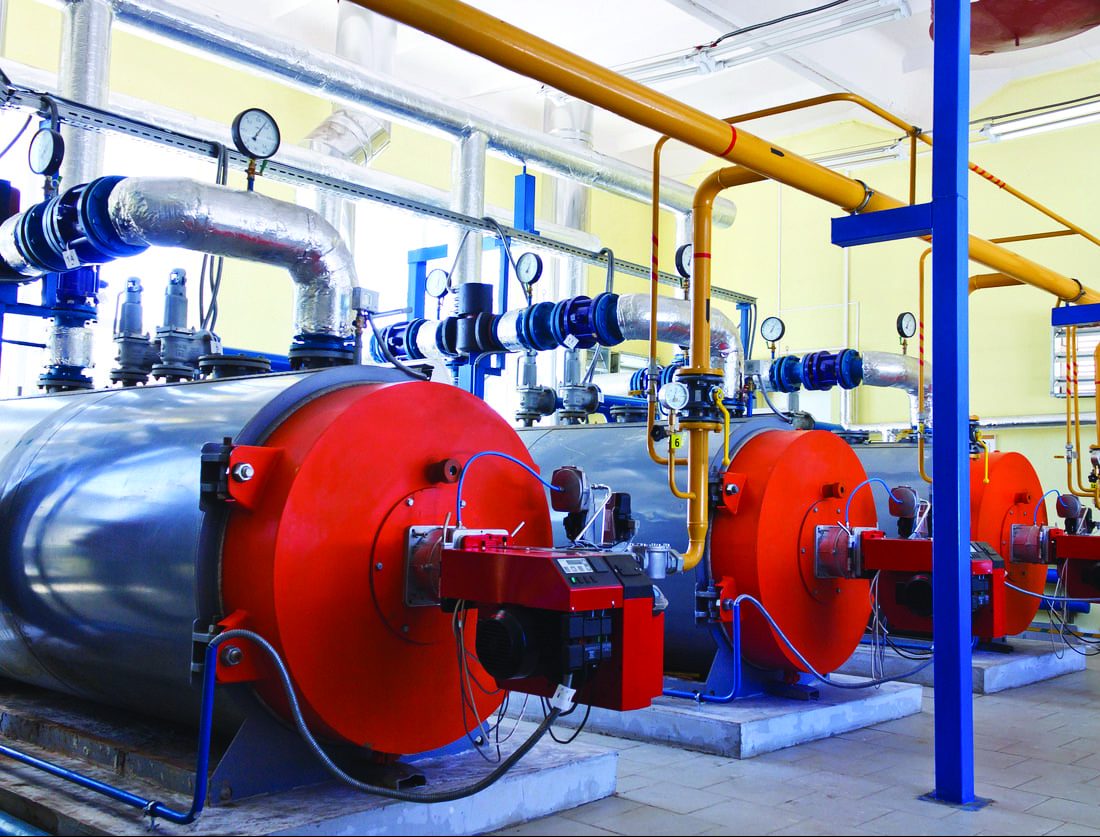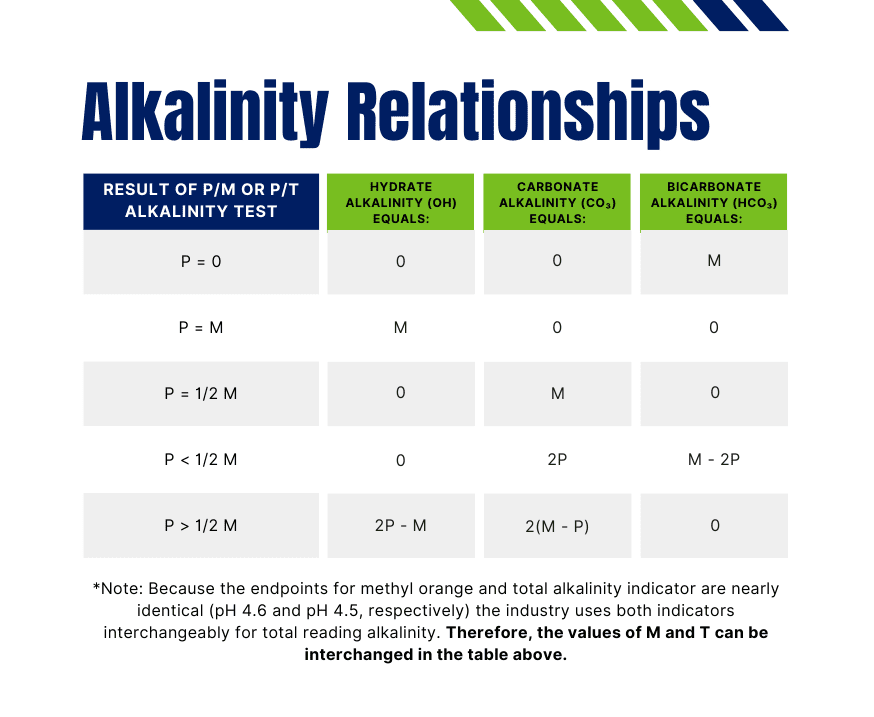
Monitoring alkalinity in boiler water protects efficiency, safety, and asset life. When alkalinity drifts, corrosion, embrittlement, foaming, and carryover start to show up. Cooling systems feel it too, as scale and corrosion treatments lose bite outside the right window. Stay inside the control band and the plant runs cleaner, steadier, and with lower fuel spend.
Alkalinity appears as three species, with the balance driven by pH.
Total alkalinity is the sum of these contributors. You measure it by titrating a sample with standard acid and reading defined endpoints. Results are expressed as P, M, or T alkalinity and reported as mg/L as CaCO₃.
You can use standard relationship tables to interpret carbonate/bicarbonate/hydroxide splits and to confirm treatment impact.
These tables help verify whether caustic addition, deaeration changes, or softening steps are delivering the expected shift.
Treatment specialists target M (or T) alkalinity below the boiler maker’s limit for the pressure class. Higher pressures call for higher purity and tighter control. Enough OH⁻ alkalinity is still required to protect steel and keep hardness from plating out; a common target sits above 150 mg/L as CaCO₃ within the manufacturer’s guidance. That balance supports passivation, stabilises pH, and limits scale growth on hot surfaces.
Low alkalinity invites corrosion. High alkalinity invites calcium carbonate scale. A steady mid-band supports inhibitor packages and keeps heat transfer stable.
Helpful tool: pH treatment solutions such as pHREADY can steady pH and alkalinity when load or water quality moves around.
Consistent technique beats sporadic testing. Small, frequent checks catch drift before it becomes downtime.
Dechlorination: Add sodium thiosulphate before titration to neutralize chlorine.
Clarification: Remove suspended solids with paper filtration; use syringe filters for colloidal color.
Polymer systems: Expect polymers to titrate as M and T; for OH alkalinity, titrate directly using the barium chloride method.
Avoid 2P–M bias: The 2P–M shortcut under-reads OH in polymer-treated waters; use the direct OH method instead.
Limit CO₂ uptake: Analyze at the sample point where possible.
Off-site samples: Fill bottles to overflowing and cap tightly; run tests promptly on arrival.
Process acid: If acid is being added for pH control, revisit the P/T interpretation, as the relation shifts under acid feed.
Odour present during testing.
Tackle the source and stabilise chemistry with pHREADY for Odour Control, which can help while you hold the required alkalinity band.

Nick Piskura is the Marketing and Web Development Specialist at ChemREADY who utilizes expertise in digital marketing strategies to provide knowledgeable insights in each segment of our business. Nick provides insights through web development and multimedia resources that support ChemREADY’s full range of services, including Legionella management, ANSI/AAMI ST108 compliance, boiler and cooling tower treatment, wastewater processing, and industrial water quality solutions.